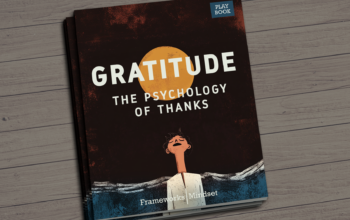The Perfectionist’s Guide to #ProgressOverPerfection
There are two kinds of people in this world: perfectionists and those who get things done.
As a bona fide perfectionist, this is hard for me to admit. But the fact of the matter is that perfection takes time. And, in an age of overnight disruptors and high-degree uncertainty, time is a luxury. To stay relevant, we have to move quickly.
This doesn’t have to mean producing half-baked goods or—a perfectionist’s nightmare—making mistakes. It’s possible for us perfectionists to embrace progress without going insane. Here are a few points that have helped this perfectionist get the hang of #ProgressOverPerfection.
1. There are many paths to perfection.
Michelangelo Buonarroti and Johannes Vermeer are both painters of the first order. They both happen to have used completely different approaches to their work.
Michelangelo painted frescoes, like the ceiling in the Sistine Chapel, which require applying quick-drying tempera paint to wet plaster. Because the timing must be exact, the process requires significant preparation and a confident brush. With frescoes, every stroke is final.
Vermeer, on the other hand, used an approach known as the Flemish Technique of oil painting. The artist starts with a primed canvas and applies one layer after another of paint—sometimes up to seven layers in all—which add up to the whole picture. With so many layers, the approach is more forgiving and the artist doesn’t need to be so strict.

The results of the two styles are similarly awesome, but the paths each artist took to arrive there are completely different.
Now, perfectionists tend to approach their work like Michelangelo approached his painting, whether they are writing a paper, crafting a design, or engineering a process. They have done the preparation and are confident in their actions. But this makes them isolationist and resistant to change.
The modern business world is more suited to the Flemish style of painting by layers. With so many stakeholders and such high volatility, we need to be able to incorporate feedback as we go and change course on the fly.
Perfectionists come to their approach honestly—they’re good at what they do and produce amazing work. And yet it’s easy to get stuck in the method and lose sight of the end product. Ultimately, flexing to a more agile and inclusive approach is possible, and the end product can be just as dazzling.
2. The purpose of the first draft is not to get it right, but to get it written.
For the Michelangelos among us, ‘revision’ is a bad word. We want to get it right the first time, and re-dos imply that the whole endeavor is wrong. So we put them off or just forget them altogether.
The problem with that is that revisions are necessary. Jacques Barzun confessed that he made a minimum of five revisions on everything he wrote. Great author and editor Sol Stein said “Writing is truly rewriting.” You just can’t avoid revisions if you want to put out good work.
Rather than avoiding revisions, then, we should make the most of them. Here again, we Michelangelos can learn something from the Vermeers of the world.
With the Flemish Technique, each layer is designed with the next layer in mind. The Drawing Layer guides the Imprimatura, which helps shape the Brown Underpainting, which helps form the Dead Layer, and so on up to the Finishing Layer. With the Flemish Technique, revisions aren’t negative; they’re additive.
This is the key to iteration of any kind: Each stage has its own purpose, and subsequent versions build on it until they reach the final product. Netflix didn’t start as the media production giant that we know today. Recall that it got its start in 1997 as a DVD distributor to rival Blockbuster. Once it established itself there, it launched streaming in 2007, and only got into producing original content in 2013. They have the potential of becoming the greatest entertainment producer in the world, and none of that would have happened without their first iteration as a snail mail distributor.
We see this pattern everywhere we look. Amazon started as an online bookseller; Apple started as a desktop computer company; Google was just a search engine. If the founders of these companies had attempted to start the multifaceted behemoths they are today, they wouldn’t have gotten off the ground.
As it is with the Flemish Technique of painting, the first iteration isn’t supposed to be the end product, but rather it is supposed to put you in a better place to eventually make the final product. As writer John Dufresne put it, “The purpose of the first draft is not to get it right, but to get it written.” There are benefits to getting something down on paper that are not quite evident until you have them down on paper. You have something to work with—it’s tangible and thus infinitely more useful that having nothing. And so it helps to simply get something down—no matter how primitive it is—and go from there.

If we break down the Flemish Technique into four main phases, Inventing, Dead Coloring, Working Up, and Retouching, we can see how this pattern of iteration can be applied to pretty much every process. Consider editing fiction. Sol Stein uses what he calls a ‘Triage’ approach to revise and rewrite in order to avoid redundant editing and keep the work fresh. In a way quite similar to the Flemish Technique, he starts with the outline, the characters, the conflict, and action, and only refines the syntax and word choice last.
Or take software development, which starts with a planning, then proceeds to requirement gathering, then analysis and design, and development before final deployment. In every realm, we can see how this approach can be helpful in working through different versions in order to arrive at a better final product.
3. Each iteration is a final product.
An ad exec once told me that their firm never shows anything to a client that they couldn’t live with. They don’t show sketches, drafts, or wireframes—only finals.
The reason is clear: Clients notoriously lack vision. They’re stuck in the waterfall mentality or just can’t imagine what something can look like in a future state. If they are presented an early iteration, they’ll criticize it for not being complete and sometimes go so far as to cancel a project because it doesn’t match their expectations.
Of course, this poses a slight problem for anyone trying to get buy-in during an iterative process. The whole idea behind iteration is to get feedback on early versions, sketches, wireframes, and this just isn’t possible if the client expects a finished product. Iteration requires a different mindset for the client as well as the producer, and that’s not something we can count on, even in an agile operation.
Granted you can’t give your clients a four-day seminar on the creative process, it is possible to get feedback on your early iterations without having them flip their lids.
The trick is to make each iteration a finished product. Identify the purpose for each iteration with relevant requirements and ways to measure success. Then, when presenting to the client, frame the deliverable with this iteration-specific purpose. If it’s in the Inventing stage, clearly label it as such and underscore the goals of that early stage; if it’s in the Working Up stage, label it as such emphasize the goals of that stage.
As can be expected, the tech industry has largely perfected this practice. Every release of software is given a version number to identify the stage in the development process. Even testing versions are released to gather feedback before the official launch. Marking it with the ‘Beta’ label prevents users from complaining about glitches and even encourages constructive feedback.
In the business world, we can employ the same tactic to make the most of iterations. It might be as simple as putting a ‘Draft’ label on an early version or a ‘Notional’ stamp when using filler data. Though it may seem obvious at a demo, it might not be clear out in the wild. When If the client’s expectations are set appropriately, it will enable them to see the iteration for what it is and empower them to give productive feedback.
Conclusion.
As business becomes more and more interdependent and fast-changing, it becomes all the more difficult for perfectionists to stay relevant. But that doesn’t mean they can’t provide value. On the contrary, it’s never been more important to have the input of a methodical perfectionist. With these few tips, hopefully, we can bring them back into the game.




